"The role of the artist has always been that of image-maker. Different times require different images." - Adolph Gottlieb in an interview with The Tiger's Eye, 1947
In 2010, the Peggy Guggenheim Collection in Venice, Italy held the first Adolph Gottlieb Retrospective in the country. The exhibition featured over sixty of Gottlieb's paintings, six sculptures, and many works on paper.
Gottlieb's interest lay in the "spiritual meaning underlying all archaic works." He spoke of the "immediacy of their images" and "the constant awareness of powerful forces, the immediate presence of terror and fear, a recognition and acceptance of the brutality of the natural world and the eternal insecurity of life." - Sanford Hirsch, Director of the Adolph and Esther Gottlieb Foundation, in the exhibition catalogue of "Adolph Gottlieb: A Retrospective"
The below photos feature some of the highlights of the exhibition.
Shown: Adolph Gottlieb: A Retrospective at The Peggy Guggenheim Collection, Venice, Italy. September 4, 2010 - January 9, 2011. Photography by Sergio Martucci.
Shown: Adolph Gottlieb: A Retrospective at The Peggy Guggenheim Collection, Venice, Italy. September 4, 2010 - January 9, 2011. Photography by Sergio Martucci.
Works pictured (from left to right): Black, White, Pink, 1954, oil on canvas, 84 x 144 in., Sentinel, 1951, oil on canvas, 60 x 48 in., T, 1952, oil on canvas 38 x 30 in., Labyrinth #1, 1950, oil and sand on linen, 36 x 48 in., Composition, 1945, oil, gouache, casein and tempera on linen, 29 13/16 x 35 7/8 in.
Shown: Adolph Gottlieb: A Retrospective at The Peggy Guggenheim Collection, Venice, Italy. September 4, 2010 - January 9, 2011. Photography by Sergio Martucci.
Works pictured (from left to right): Untitled, 1968, bronze cast in form of masking tape roll, 11 x 6 1/2 x 1 7/8 in., Red Ground, 1972, oil on linen, 84 x 60 in., Ochre and Black, 1962, oil on canvas, 78 x 132 in.
Shown: Adolph Gottlieb: A Retrospective at The Peggy Guggenheim Collection, Venice, Italy. September 4, 2010 - January 9, 2011. Photography by Sergio Martucci.
Works pictured (from left to right): Three Discs on Chrome Ground, 1969, oil and acrylic on canvas, 48 x 72 in., Russet, 1973, acrylic on canvas, 60 x 48 in., Blue Ground, 1973, oil and acrylic on canvas, 60 x 48 in., Swirl, 1972, oil and alkyd resin on linen, 84 x 60 in., Imaginary Landscape, 1969, oil on canvas, 48 x 112 in., Burst 1973, acrylic and enamel on canvas 84 x 60 in.
Shown: Adolph Gottlieb: A Retrospective at The Peggy Guggenheim Collection, Venice, Italy. September 4, 2010 - January 9, 2011. Photography by Sergio Martucci.
Works pictured (from left to right): Imaginary Landscape, 1969, oil on canvas, 48 x 112 in., Burst, 1973, acrylic and enamel on canvas, 84 x 60 in., Pale Disc, 1965, oil on canvas, 72 x 60 in.,Three Discs on Chrome Ground, 1969, oil and acrylic on canvas, 48 x 72 in.
Shown: Adolph Gottlieb: A Retrospective at The Peggy Guggenheim Collection, Venice, Italy. September 4, 2010 - January 9, 2011. Photography by Sergio Martucci.
Works pictured (from left to right): Untitled, 1966, acrylic on paper, 24 x 19 in., Negative, 1968, maquette; acrylic on cardboard, 7 1/2 x 17 3/4 x 4 3/4 in., Arabesque, 1968, maquette; acrylic on cardboard, 13 1/8 x 17 1/2 x 6 1/4 in., Oval Slanted, 1968, maquette; acrylic on cardboard, 4 3/4 x 8 x 5 in., Petaloid, 1968, maquette; acrylic on cardboard, 7 3/4 x 8 x 3 1/2 in.
"In 1963, Martin Friedman wrote that Gottlieb had “arrived at a dispassionate world view,” based on “rudimentary physical principles—gravity, suspension, motion.” Gottlieb used the language of painting to evoke these qualities of the physical environment, determining the conditions of our existence as human beings. The artists of the next generation set out to explore them via performance, installation, and sculpture. Whether or not they chose to recognize the debt, they were Adolph Gottlieb’s heirs. His legacy remains alive, today, in the environmental installations of artists such as James Turrell and Olafur Eliason (fig. 38). What they achieve with tungsten lights, fog generators, huge mirrors, and artificial waterfalls, he achieved with paint and canvas. In an era when artists felt that painting had reached its limits, Gottlieb showed how much painting still had left to say." - Pepe Karmel in the exhibition catalogue of "Adolph Gottlieb: A Retrospective"
Shown: A poster from the exhibition hung over the Grand Canal
An inside look at the unusual shipping arrangements that need to occur when sending works to Venice.
Shown: Gottlieb's work arriving at The Peggy Guggenheim Collection.
Shown: Gottlieb's work arriving at The Peggy Guggenheim Collection.
Shown: Exclamation, 1958 arriving at the Peggy Guggenheim Collection. The work's arrival is overseen by Dr. Grazina Subelyte, Associate Curator at the Peggy Guggenheim Collection.
Below are some images of paintings that were in the exhibition.
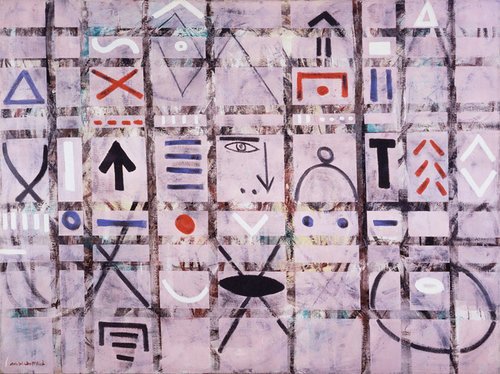
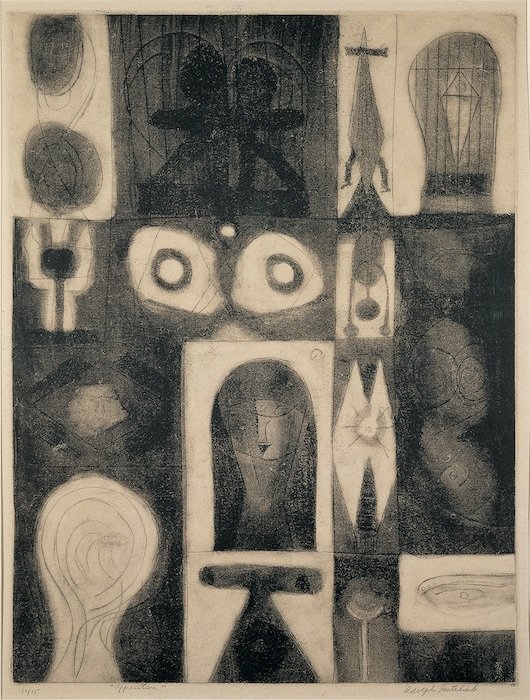
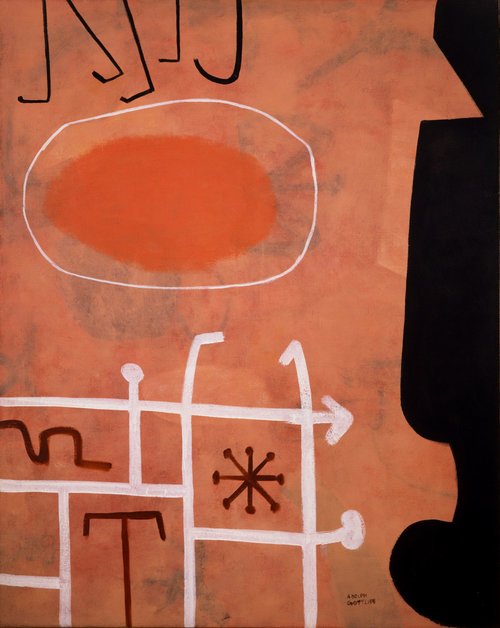
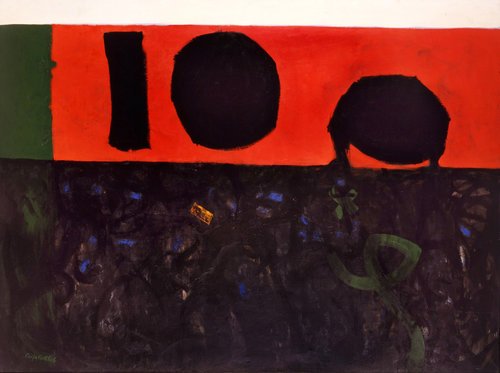
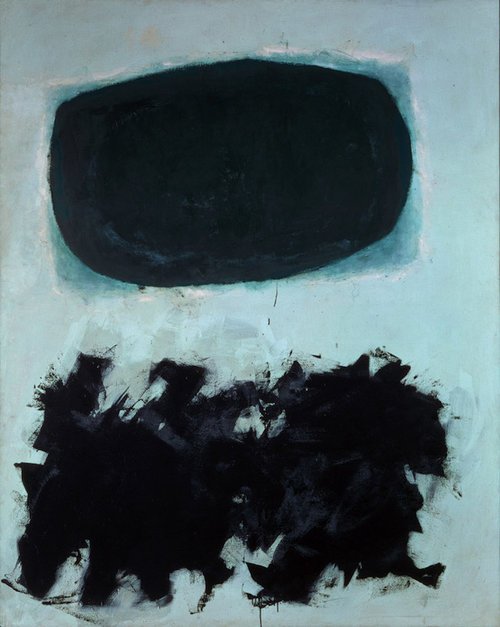
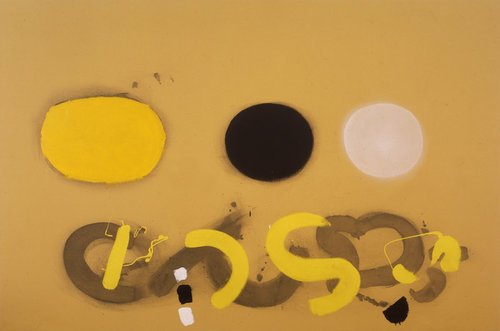
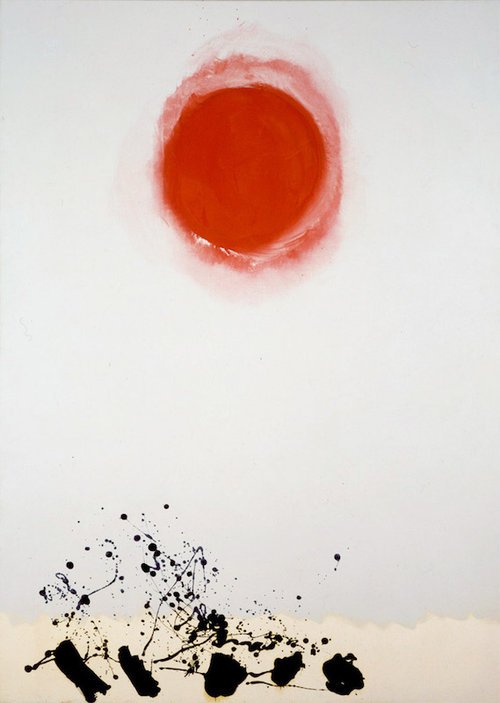
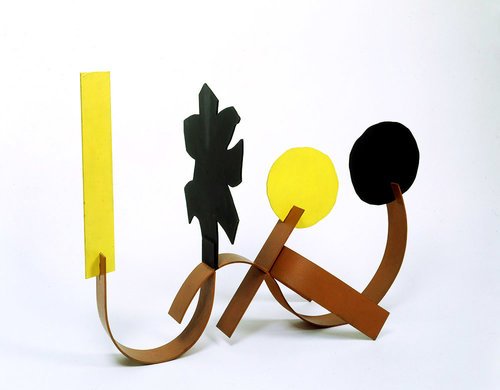
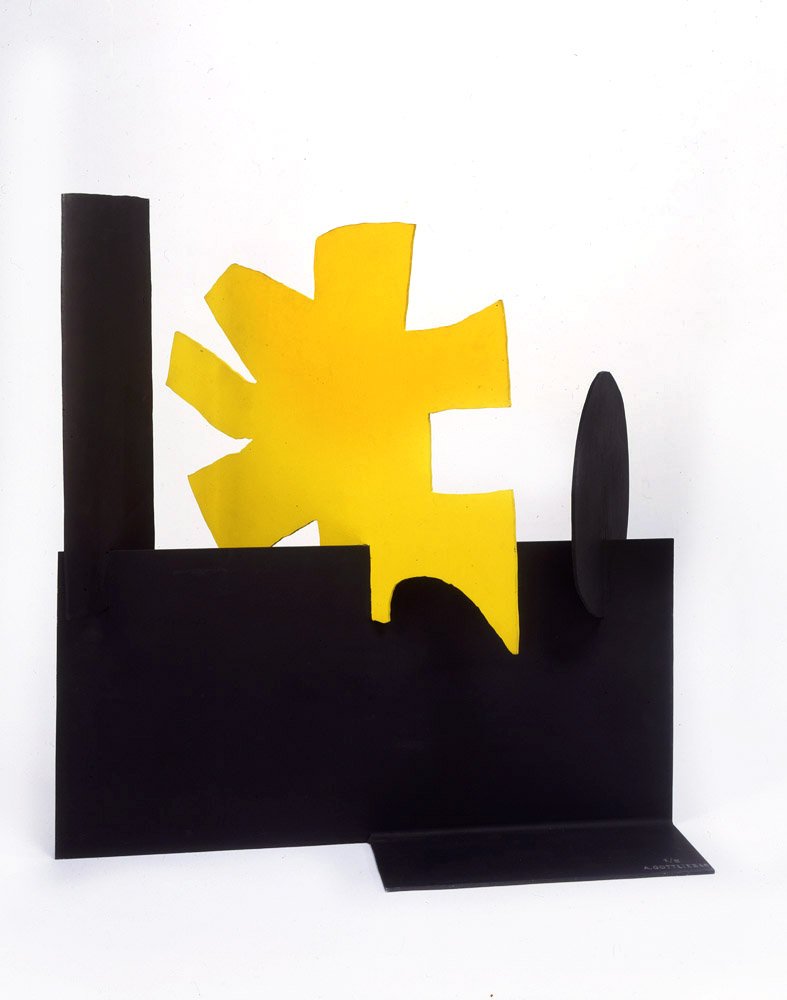
To explore more exhibition walkthroughs like this one, visit our ongoing series.
All Artwork ©Adolph and Esther Gottlieb Foundation/Licensed by ARS, NY, NY










